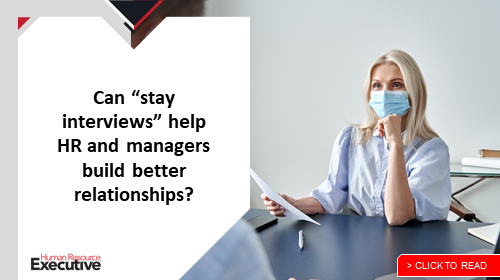When it comes to the impact of COVID-19 on the U.S. workforce, there’s little doubt the pandemic has been far tougher on working women, especially mothers, than on men.
According to the US Census Bureau, 3.5 million women have left the workforce during just the first month of the pandemic, and many have yet to return.
[[AD}}And McKinsey & Co.’s recent Women in the Workplace suggests the exodus may not be abating: It found that one in three women over the past year had thought about leaving their jobs or “downshifting” their careers. By contrast, the study found, one in four women had considered leaving pre-pandemic.
Much of that sentiment may be due to burnout, driven by increased childcare responsibilities and the lack of separation between work and home with shifts to remote, says Kathleen Quinn Votaw, CEO of TalenTrust, a strategic recruiting and human capital consulting firm.
“Women are providing for themselves in some cases, and in other cases their families, which includes, but is definitely not limited to, school drop-off and pick-up, sports, ballet, an elderly partner, a pet, a person in their life with disability and their own interests outside of work,” she says. “This list goes on and on.”
Related: HR’s big task: Getting women back in the workforce
 The McKinsey report noted that women “are even more burned out now than they were a year ago,” adding that women are increasingly feeling the pressure more than men. Forty-two percent of women said they felt burned out in 2021, compared with 32% who said so in 2020. For men, that number was 35% in 2021, compared to 28% the year before.
The McKinsey report noted that women “are even more burned out now than they were a year ago,” adding that women are increasingly feeling the pressure more than men. Forty-two percent of women said they felt burned out in 2021, compared with 32% who said so in 2020. For men, that number was 35% in 2021, compared to 28% the year before.
Clearly, employers looking to convince women to return to the workplace have much to do, Quinn Votaw says. Can HR help employers do what it takes to bring women back to the workplace? Yes, she says, but it will take specific strategies that focus on the needs of women struggling to maintain their family situations and be back on the job.
Quinn Votaw says it “frankly comes down to making your workplace adaptable to meet the needs of today’s working parents,” especially women who left their jobs because, to them, family came first.
“Employees, especially females, work for you to provide a better life for their families, period,” says Quinn Votaw, author of DARE to CARE IN THE WORKPLACE: A Guide to the New Way We Work. “It has never and will never be about you, their boss or your company first.”
Quinn Votaw left the traditional workforce to start her own venture in 2003 (“Way before it was cool,” she says), seeking a fuller, happier life. By 2010, her business grew to $2.5 million annually with 25 employees, making the Inc. 5000 list.
“I exited the traditional workforce so I could work from home and put my family first. I wanted flexibility that was almost impossible to find in the traditional workplace,” she says. “We put our family, our life first and it has made all the difference. Today’s working women want to be able to do the same thing in their work lives as much as possible.”
 When it comes to enticing most of the women who dropped out of the workforce to return, flexibility ranks high among the critical factors, she says. Recent research from The Mom Project’s WerkLabs bolsters that idea, finding that working mothers, on average, don’t want to come into an office more than two days a week.
When it comes to enticing most of the women who dropped out of the workforce to return, flexibility ranks high among the critical factors, she says. Recent research from The Mom Project’s WerkLabs bolsters that idea, finding that working mothers, on average, don’t want to come into an office more than two days a week.
However, flexibility shouldn’t just be for parents.
“Young, old, single, married … give women the choice of how they want to work,” Quinn Votaw says, offering several strategies for employers who want to lure women back to the workforce:
- Provide options to work from home (or anywhere) so female caregivers can still support those they love outside the workplace. “Most humans you hire are adults, so they can make decisions about what to do and when to do it,” she says.
- All employees want to be inspired, so provide learning opportunities and development as well as access to other women who are thriving and managing their life and work in harmony.
- Above all, deliver empathy and compassion—not just to women but all of your employees, she says, adding that, “After all, employees are complex humans who need loving leaders.”
The post Why flexibility is just the start to draw women back to the workforce appeared first on HR Executive.